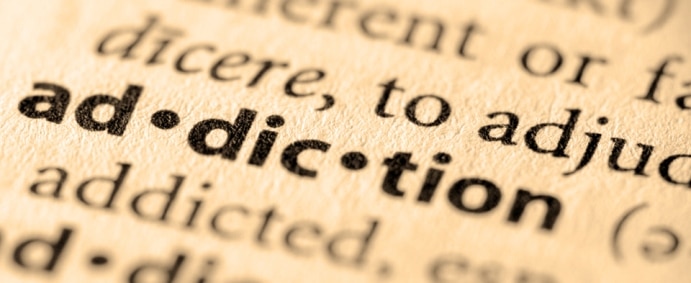The repeated and constant use of an addictive substance and/or behavior affects how the brain experiences pleasure. When a habit that one was just experiencing once in a while becomes a constant everyday behavior, the body increases the tolerance level. When this happens the user will need to up the dosage so as to try to achieve the same euphoria that they used to get in the beginning. As a result of constant abuse, the brain gets used to having the substance or behavior constantly so as to function normally. The continued tolerance and desire to have more and more eventually brings about the risk of addiction. While it’s true that the initial choice to engage is voluntary as the behavior continues, the choice is taken away as neurobiological changes happen.
Personal history is also a major contributor to underlying addiction. These include childhood experiences like abuse of any kind, environment and so forth. These can lead to negative emotions in an individual which in turn would create strong motivation for seeking relief through any means they deem necessary.
There are several factors that might influence one to engage in a specific and harmful behavior:
- Capability- either physical or psychological to engage in a certain behavior.
- Motivation- the automatic or reflective mental processes that guide behavior.
- Opportunity-the ease of access, peer attitudes especially in adolescents who are very vulnerable as their brains are still developing.
- Environment- Social networks, socioeconomic status, mental health, stress or any kind of abuse especially during childhood.
There are some common characteristics of people who are afflicted by addiction problems:
- Negative feelings –most people who are addicted to a drug or a behavior are usually trying to escape ,minimize pain and achieve pleasure
- Preoccupation with continuing the behavior that takes up most of the persons’ time and thoughts. That person is thinking about and looking for ways to engage in the behavior constantly.
- Temporary and short lived fulfillment that will propel one to engage again and again as the brain becomes more and more accustomed.
- Feeling out of control of ones’ actions and inability to stop themselves from engaging in certain behaviors.
- Engaging despite knowing and being aware of the negative consequences either health, financial or even legal ramifications.
Addiction is a very serious but preventable condition. Intervention and prevention measures can reduce the risk of addiction among the youth and advertently among the whole population.
- Prevention programs– targeting learning areas and communities can help decrease the danger of addictions among young populations.
- Education– giving education to parents, children and adolescents on the dangers and risks of harmful habits like drug abuse or even seemingly innocent pastimes like gambling.
- Skills training– Parenting skills and communication skills can be taught to both the parents and the children. This can raise their self-esteem and improve on their assertiveness.
- Out-reach– Promoting participation and increasing engagement at the community level to increase engagement in the community.
If prevention measures don’t help then the next logical step is treatment. It is usually a grueling and challenging time for all those affected the family and the victim as well. The treatment is available at any point of the addiction.
There are several addiction treatment programs available for people struggling with addiction. They include:
- Detox-a short term treatment necessary for people that are physically dependent on drugs or alcohol. It involves close monitoring by health professionals. This is especially because of the withdrawal symptoms which can sometimes be fatal.
- Residual treatment– staying at a facility full time to get treatment like rehabilitation centers which have a number of activities that are about recovery. These are usually trigger-free environments where one cannot be tempted to engage.
- Out-patient treatment-therapy sessions that occur a few times a week. They are less restrictive than inpatient treatment and do not require one to remain at the facility at the end of the day.
- 12 steps programs– these are usually free to join and provide people with support and encouragement.
- Dual diagnosis– these specialize in helping people who are also struggling with mental health issues as well as addiction. Treatment may involve individual, group and family therapy as well as medication management.
Citation
National Institute of Health (2010). NIH Fact Sheets-Drug Abuse and Addiction.
National Institute on Drug Abuse. (2003). Preventing drug use among children and adolescents: A research-based guide for parents, educators, and community leaders .
National Institute on Drug Abuse. (2014). Drugs, brains, and behavior: The science of addiction .
Substance Abuse and Mental Health Services Administration. (2016). Prevention of substance abuse and mental illness .






